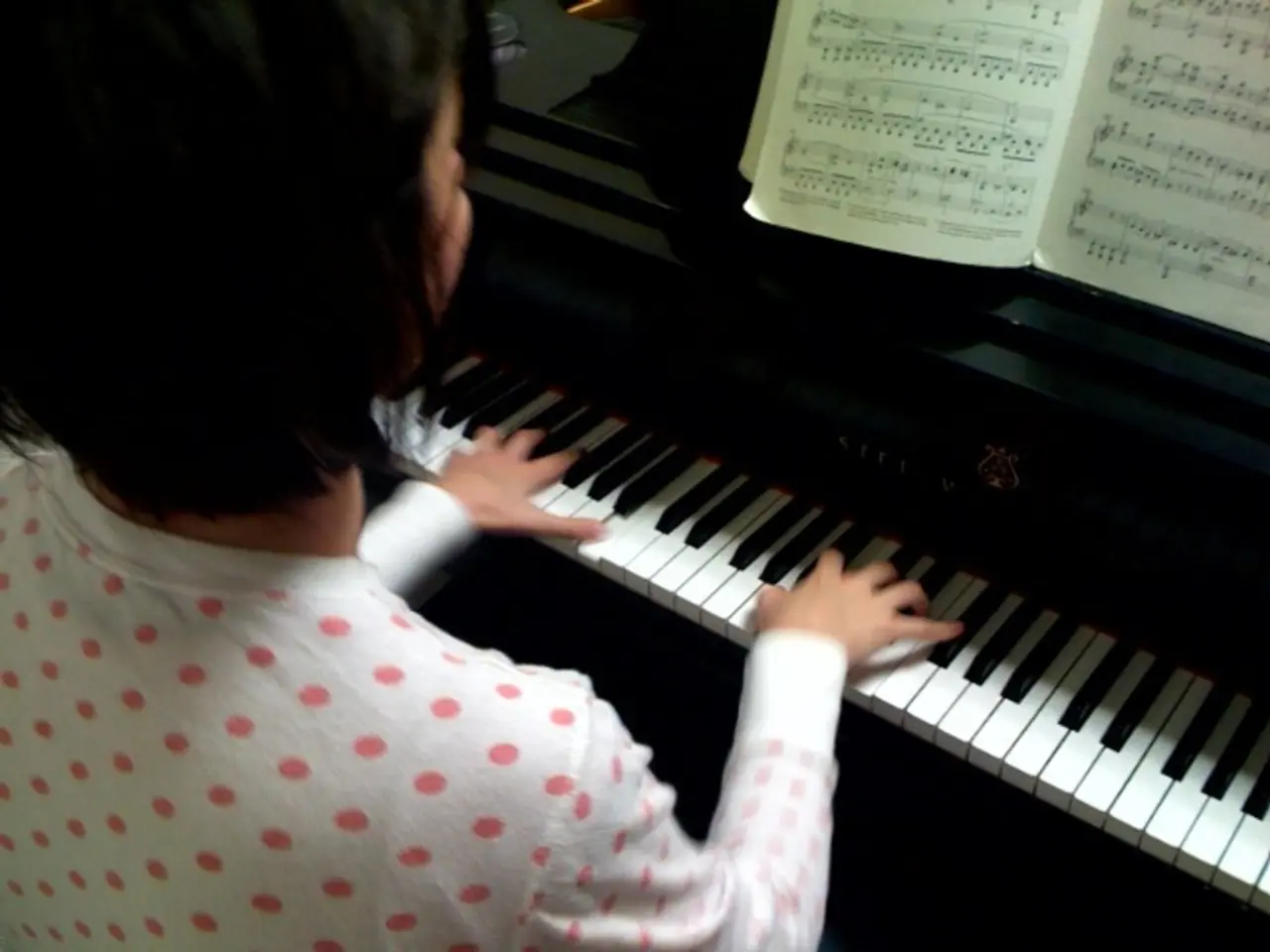Musicians' Guide: Differentiating Between a 6th Chord and a 13th Chord
In the world of music, chords play a pivotal role in creating harmony and tension. Two such extended chords, the 6th chord and the 13th chord, add a unique flavour to compositions, particularly in jazz, pop, and blues genres.
A 6th chord is a simple yet effective extension of a triad. It typically includes the root, the third, the fifth, and the sixth notes of the scale. For instance, a C6 chord consists of the notes C, E, G, and A. The 6th chord adds colour without introducing strong tension, making it ideal for simple colouring in music.
On the other hand, a 13th chord is a complex extended chord that creates a much richer, tenser sound. It is based on a dominant 7th chord and includes extensions such as the 9th, 11th, and the 13th tones. The 13th is the same pitch class as the 6th but placed an octave higher. A C13 chord, for example, includes C, E, G, Bb (the dominant 7th), D (the 9th), F (the 11th, often omitted), and A (the 13th).
The 6th and 13th chords serve different functions in music. The 6th chord adds a smooth, mellow, and jazzy extension to the triad without introducing tension. In contrast, a 13th chord carries dominant function tension and often resolves to the tonic chord, creating a sense of resolution.
When it comes to usage, 6th chords are commonly used in jazz, pop, Latin, and simple colouring scenarios, while 13th chords are more prevalent in jazz, blues, and complex harmony scenarios.
Mastering these chords expands one's harmonic vocabulary and expressive palette, whether composing, arranging, or improvising. For instance, a common C13 voicing on guitar might be (root, 3rd, 7th, 13th), while a common six-string voicing for a C13 chord includes root, 3rd, 7th, and 13th notes (5th and 9th often omitted).
In summary, the 6th chord is a simpler addition of the sixth note to the base chord, while the 13th chord is a complex extended chord including multiple tensions. The 13th chord represents an octave-displaced 6th combined with a dominant 7th foundation, making it a powerful tool for creating tension and resolution in music.
The 6th chord, with its smooth and jazzy extension, often finds its place in genres like jazz, pop, Latin, and simple coloring scenarios. On the other hand, the 13th chord, known for its dominant function tension, is more commonly used in jazz, blues, and complex harmony scenarios, as it often resolves to the tonic chord, creating a sense of resolution.







